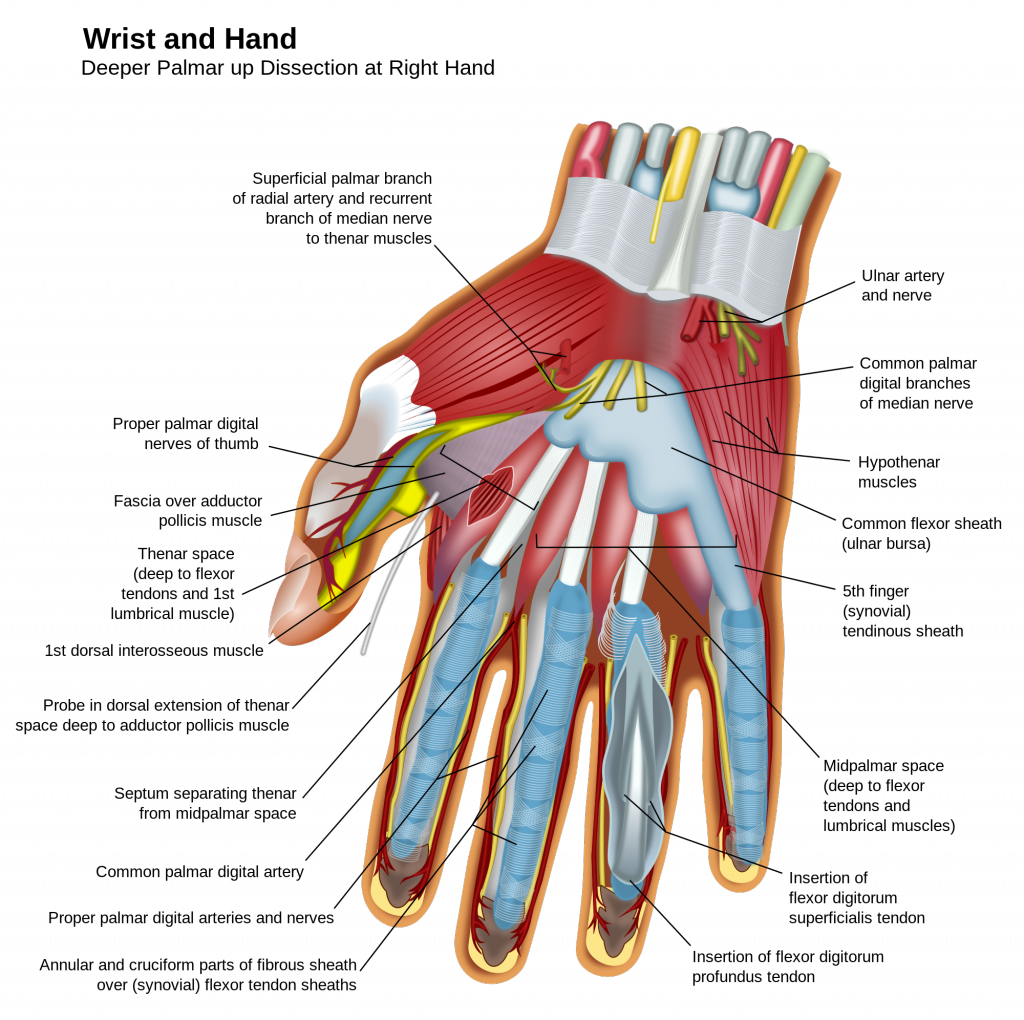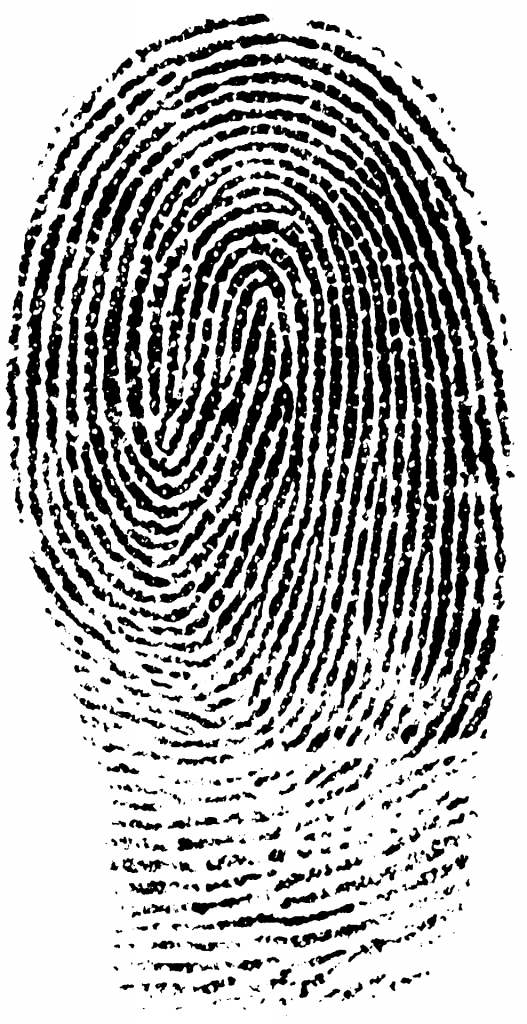
- “I must use this specific fingering.”
- “This interval or chord is too large for my hand.”
- “This passage is uncomfortable to play, but this edition insists on the certain fingering.”
- “I can play this technical exercise with greater ease and comfort with a different fingering than is indicated in this edition.”
Are these phrases familiar to you? Have no fear! These thoughts are common and frequent among pianists of any level.
This blog will describe the physical features of the hand as well as how these factors play key roles in sustaining the health and longevity of pianists.
Do We All Have the Same Hand?
[accordion multiopen=”true”]
[toggle title=”Structure, Size and Coordination” state=”opened”]

The physical features of the hand such as length, width, hand span, weight, and finger length all vary from one person to the next. It is important to remember that although many hands may look the same, each person’s hands have different physical abilities. In the study conducted by Lee (2010), the precise differences in pianist’s hands were exposed and investigated. Lee found that critical performance aspects such as articulation, dynamics, voicing and synchrony, were not influenced by hand biomechanics. This study illustrates the idea that all pianists, whether professional or amateur, should create their own solutions to technical problems through understanding their own unique set of biomechanics.
[/toggle]
[toggle title=”Significant Components of the Hand”]

Pianists should be aware of two specific areas of the hand. The first component is the wrist. A pianist’s wrist must be able to freely move from side to side as well as upwards and downwards. Having a flexible wrist allows a pianist to have efficient movement across the keyboard. Many pianists have a wide range of movement in their wrists and each player should take into account the extent to which their own wrist is able to rotate. Being aware of wrist flexibility can help pianists create music in a more comfortable manner that avoids causing strain or discomfort.
The second crucial are of the hand to focus on is the fingers. Fingers are delicate and must be cared for in a thoughtful manner while playing the piano. Pianists must be aware of how much time they spend practicing. A common belief among pianists is that they must practice as much as possible in order to achieve success. This idea however, is far from the truth. Practicing too much causes strain and stress that human fingers are not capable of withstanding for long periods of time. Another process in sustaining finger health is to limit the amount of stretching the fingers undergo while playing. The joints of the fingers are small and are not built to be put under consistent duress and strain. Choosing an appropriate fingering is a step that should be examined carefully by each pianist. Many musical score editions, as well as technical exercises, suggest specific fingerings to use. The fingerings suggested by editors should also be examined by each person before and during use in order to make sure that the fingers are being used in a manner such that they will not become susceptible to injury.
Keeping the wrist and fingers healthy by avoiding strenuous movements will allow pianists to sustain reproducibility and regularity of patterns of palmar prehension as well as finger coordination which is more common in people with formal piano training. (Fernandes, 2012). The hand is composed of many intricate components, but the wrist and fingers are of immense importance to the health and longevity of the hands of pianists.
Refer to the further information section for a detailed description of the hand.
[/toggle]
[/accordion]
Do All Hands Play the Same Way?
[accordion multiopen=”true”]
[toggle title=”Each Person’s Biomechanics Are Unique” state=”opened”]

Just like the uniqueness of each person’s fingerprints, our hands are also distinctive to each person. Our hands are often asymmetrical, meaning that the left and right hand are slightly different from each other. This is significant to keep in mind while playing the piano in order to maintain the health of our hands. In some instances, a pianist may easily reach a jump or leap with one hand, while the other hand may experience greater difficulty. Minetti (2007) quantitatively showed that each pianist who was examined in the study had a slightly varied key stroke interval and descent velocity of keystrokes. This study enhanced any preconceived notions about the way in which our body moves, as well as proved that every person’s hand reacts in a slightly different manner. Wagner (2012) enhanced the point of hand differences by creating, a “Hand Profile,” which produces a diagnostic of different physical elements and capabilities of each person’s hand. This “Hand Profile” can help each person understand their own hands in a quantitative way as well as to show the differences of hands from person to person. Wagner summarized his point by saying that, “From hand research as a whole, we may recognize that there is in fact little reason for generalizing manual abilities” (Wagner, 2012, p. 57).
[/toggle]
[toggle title=”Pupils Are Easily Influenced”]
Student pianists are easily influenced by people of a higher authority in their area of study. In many cases, this can be a tremendous asset to musicians. However, pianists should be wary and mindful of the capabilities of their own hands when receiving instruction. In any situation of teaching, the pedagogue’s hands and the student’s hands will differ in a variety of ways. Students must keep in mind their own hand biomechanics in order to avoid developing habits that may cause damage to their hands. In many instances, the instruction received from a high level pedagogue will be useful information, but the student would be wise to analyze the interpreted information with care and with respect to their own physical biomechanics. In doing so, the student will be able to help prevent injuries. In many cases, especially with young pianists who are still developing, hand sizes will be considerably smaller than those of their teachers. Kuan-Yin (2015) showed that pianists who have small hands are at a higher risk of injury due to their structural limitations. This study provides educators, as well as pianists, with the proper knowledge to encourage individualized ways to play the piano in order to attain excellent performances while also preventing injuries.
[/toggle]
[toggle title=”Embracing Technical Limits”]
It is of vital importance for pianists to understand their own technical limitations. Understanding these boundaries through biomechanics is a key component of becoming a successful musician and can help sustain hand health long term. As stated in previous sections of this blog, making sure to choose healthy hand and finger positions as a pianist can help sustain hand longevity. What exactly does this mean though? Pianists should first seek to understand their own hands before tackling new techniques, fingering suggestions, or hand positions from outside sources. A study done in 2010 suggests that pianists are capable of creating their own solutions to difficult technical problems, and will implement these solutions in order to make their hands more comfortable while playing the piano (Lee, 2010). This study ultimately suggests that pianists must know their own hand biomechanics in order to proficiently play the piano with comfort and ease (Lee, 2010). Additionally, studies have been conducted on the differences between right hands and left hands during piano playing. It has been found that pianists focus more on the right hand while playing the piano, which causes significantly more strain on the right hand than the left hand (Parncutt, 1999). Parncutt’s finding is essential to pianists in providing information to be aware of both of their hands while playing the piano, and to create as much ease as possible.

[/toggle]
[/accordion]
Why is it Important to Understand Hand Biomechanics?
[accordion multiopen=”true”]
[toggle title=”Longevity and Health” state=”opened”]

Since human hands constantly change and develop over time, pianists should continually seek understanding about their hands’ biomechanical limitations. Pianists must learn to consistently deal and cope with this natural phenomenon in order to maintain a high-level of playing throughout the span of a career. As the hand changes through each person’s life, the most crucial way to increase the longevity and health of the hand is to maintain a non-straining regiment of practice, while maintaining proper techniques that fit the individual. Being mindful of hand biomechanics while playing and practicing can help pianists of any level sustain a lengthy and healthy career of piano playing.
[/toggle]
[toggle title=”Comfort and Ease=Enjoyment”]
Maintaining healthy practicing and performing habits increases both comfort and ease while playing the piano. Pianists often practice numerous hours every day in order to achieve high level performances and in many cases, disregard all attempts at understanding their hand biomechanics. In doing so, many pianists can sustain injuries due to the lack of knowledge and precaution they take with protecting their hands. (Wagner, 2012, p.57) stated about hands that in the medical profession, “Little attention has been paid to the interaction of the numerous biomechanical factors involved and the extent of their inter- and intra-individual variation”. Pianists of all levels should take into account their hands’ limitations and capabilities. Being aware and knowledgeable about your own hands can contribute to providing a comfortable and enjoyable experience of piano playing.
[/toggle]
[toggle title=”Awareness for the Future”]

As new piano pedagogues begin teaching, it is important to educate young pianists on newly conducted research in hand biomechanics. Many injuries that occur in pianists are caused by pianists not knowing enough about their hands, or not knowing where to find information about engaging in healthy hand usage. The intention of this blog is to bring to attention a simple sounding idea that our hands are in fact, “not transformers”. Through this blog, I also sought to create an interesting and informative article to educate pianists of the importance of sustaining the health of their hands. The science of studying hand biomechanics is relatively recent and thus, “Science does not precede the age-old practice of the few well-regarded pedagogues; science helps to affirm the good pedagogy and gives tools to separate the misguided pedagogy” (Lee, 2010, p. 8).
[/toggle]
[/accordion]
[accordion multiopen=”true”]
[toggle title=”Further information” state=”opened”]
Hand Anatomy Tutorial-Randale Sechrest (2012)
[/toggle]
[/accordion]
[accordion]
[toggle title=”References” state=”closed”]
Fernandes, L. F., & Barros, R.M.L. (2012). Grip pattern and finger coordination differences between
pianists and non-pianists. Journal of Electromyography and Kinesiology, 22(3), 412-418. doi:
Clarke, Raekallio, and Desain. Music Perception: An Interdisciplinary Journal, 18(4), 505–511. doi:
regard to piano-related musculoskeletal disorders. International Journal of Industrial Ergonomics,
50, 97-104. doi: 10.1016/j.ergon.2015.09.011
Performing Artists, 25(4), 167-174. https://www.sciandmed.com
/mppa/journalviewer.aspx?issue=1190&article=1885&action=1
Minetti, A. E., Ardigò, L. P., & McKee, T. (2007). Keystroke dynamics and timing: Accuracy, precision and
difference between hands in pianist’s performance. Journal of Biomechanics, 40(16), 3738-3743. doi:
doi:10.1016/j.jbiomech.2007.06.015
written, and rehearsed fingerings of parallel melodic piano music. Australian Journal of Psychology,
51(3), 204-210. doi: 10.1080/00049539908255357
Medical Problems of Performing Artists, 27(2), 57-64. http://search.proquest.com/docview
[/toggle]
[/accordion]

Leave a Reply